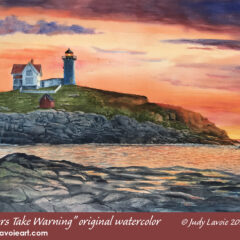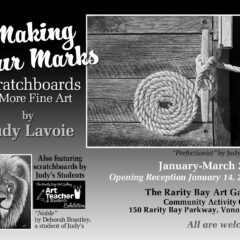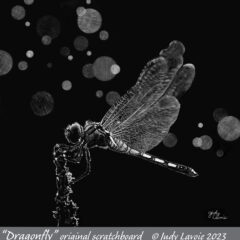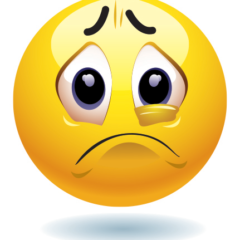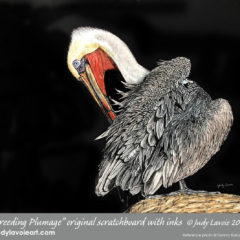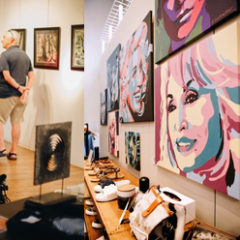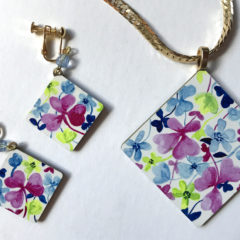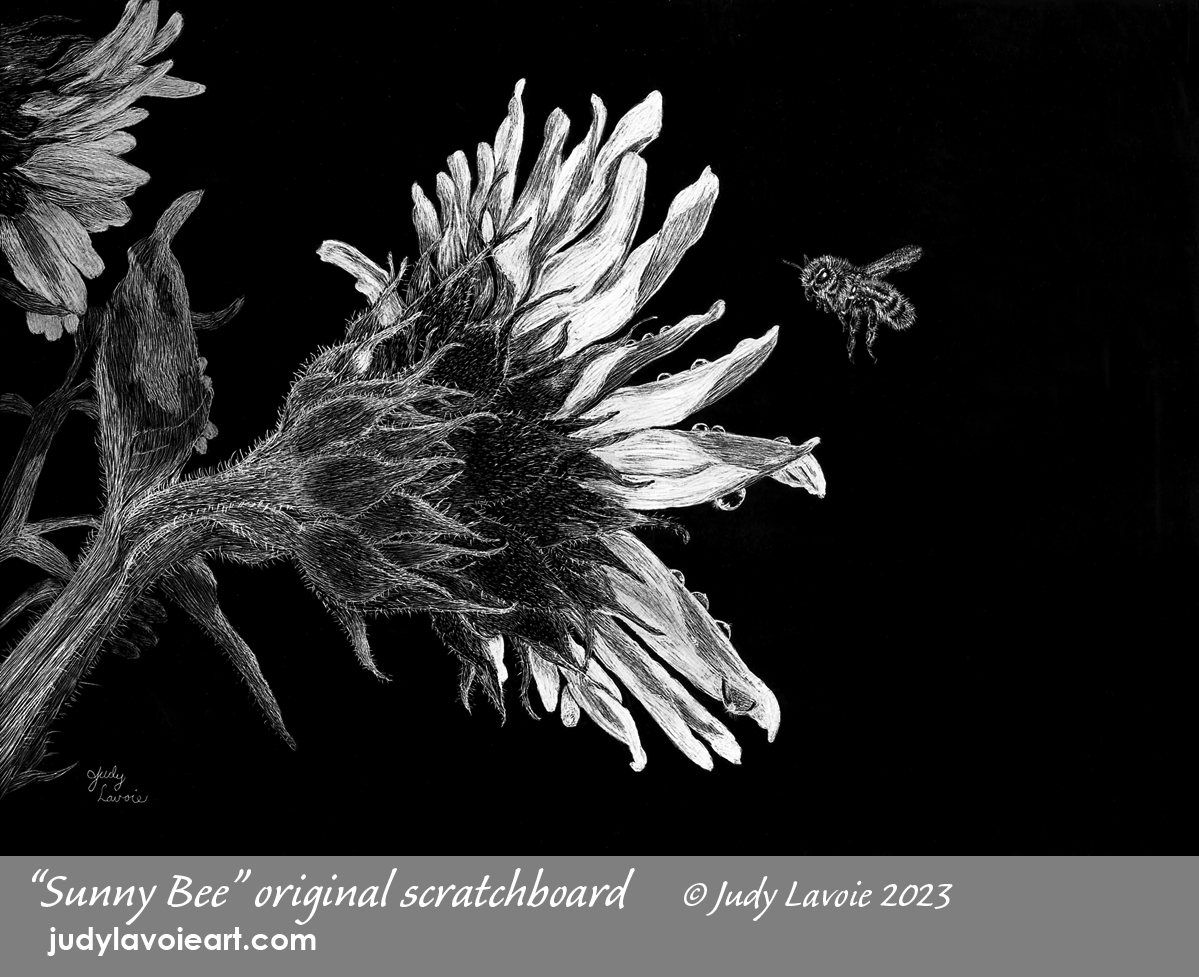
I often get a row of beautiful sunflowers blooming on the ground below our porch, from seeds dropped by birds at our feeders. Sunflowers follow the sun, and I captured this backlit photo early one morning. There were still dew drops on some petals, The early morning sunlight highlighted the yellow petals beautifully, especially in my backlit view. The image had lots of elements I like to capture in my art. I’ve painted sunflowers in watercolor and acrylics, but this time I wanted to create a scratchboard sunflower, without any added color. My challenge: capture a wide range of grey values between the pure white and black areas, while creating the illusion of bright light filtering through the petals.
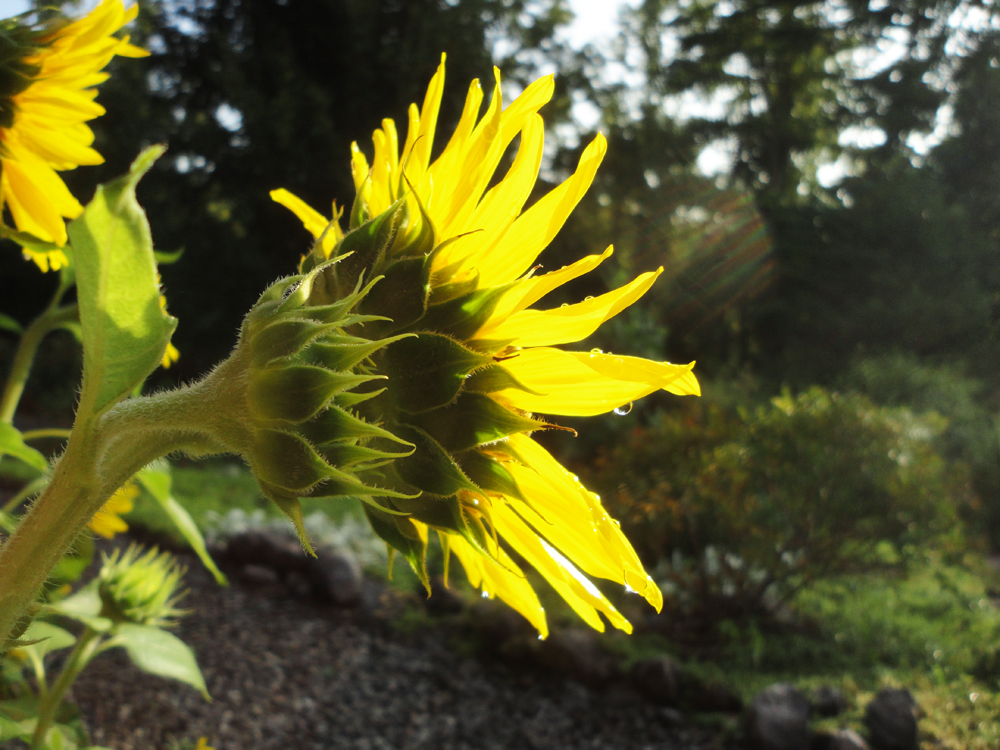
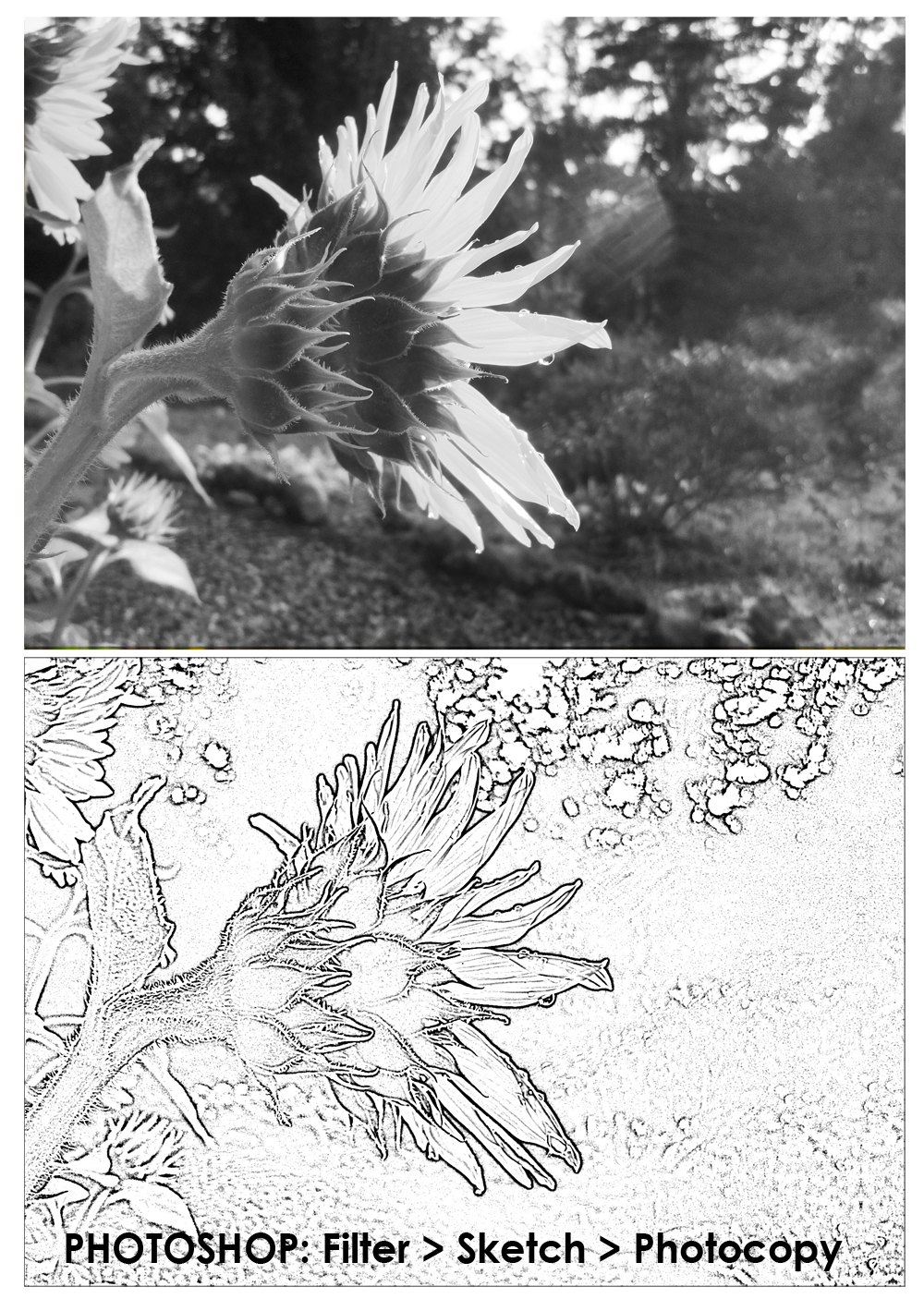
I chose a 5”x7” Scratchbord™ panel for this painting, turned horizontally. To help me focus on values vs. colors. I often print my reference photo just in black and white. With my years of experience in photoshop, I also try different filter effects to help me see the outlines of the main sections.
Fast forward past many of hours of scratching, primarily using a pointed scriber, one of my favorite scratching tools. The pen-like holder has a pointed carbide tip and scratching with it feels as natural as drawing with a pencil. Mine is General brand but I have seen others. They are often sold as tools sold in hardware stores for etching on glass or metal, and Amazon sells the tool too.
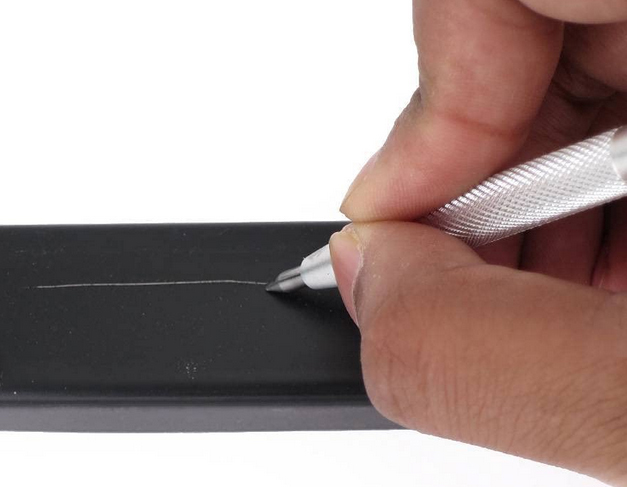
I tried to make the background petal in the left top corner draw less attention than the main blossom, keeping the values more mid-range and less detailed. I loved adding the tiny hairy fibers which grow out from everything but the yellow petals. The dew drops add a special touch too. The ability to depict this type of fine detail is one of the strong attributes of scratchboard art which I love.
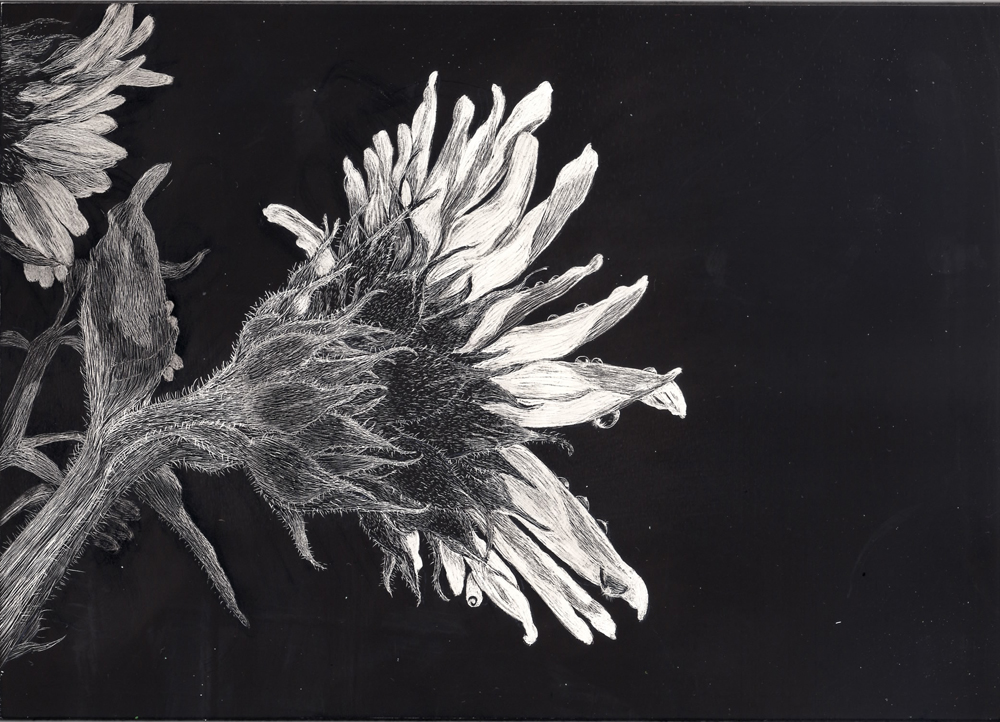
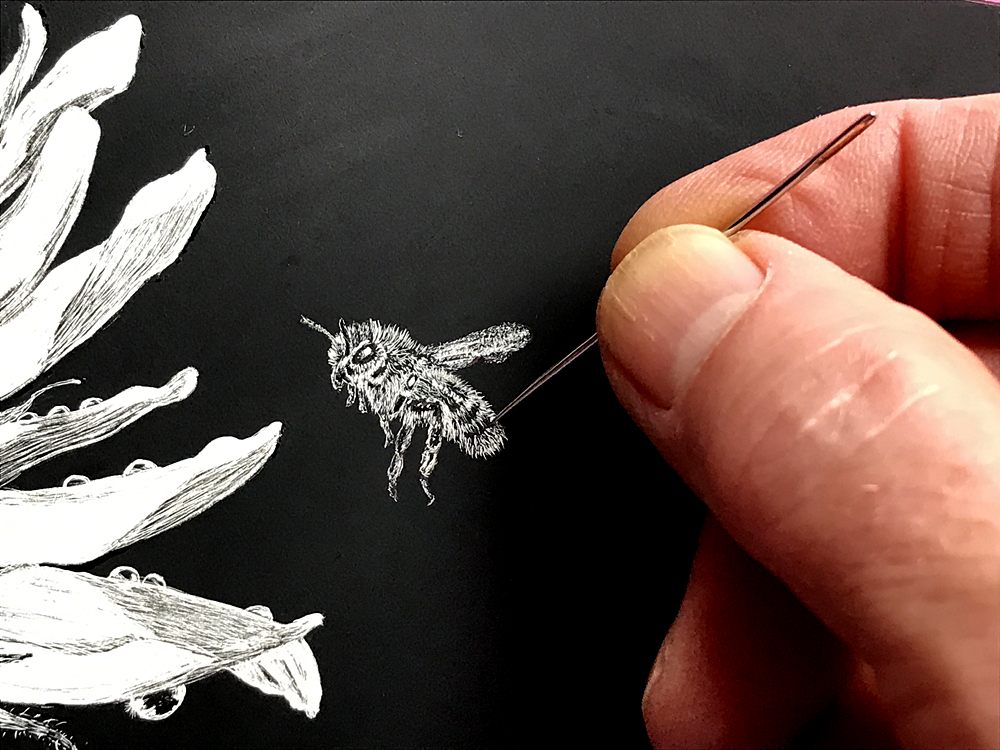
Sometimes I leave the unscratched solid black background on my scratchboards, but in this case it seemed overwhelming. I came up with two options: (1) scratch the area in the top right to make the appearance of light filtering through the background trees, as my original photo captured, or (2) add something to the right of the flower. For a long time I’ve been contemplating featuring a honey bee in a painting, and this seemed the best idea. Honey bees are so crucial to our survival as pollinators, and there are so many threats to their health and preservation, and I wanted to honor them. When my research revealed that the body of the worker be is covered with tiny hairs, I could hardly wait to add one to the sunflower! I scanned my scratched panel to look at it in Photoshop and try different sizes and positioning of the honey bee, fluttering in the air next to the open blossom. The bee’s size made the details of the body minute; I’d need a very fine tool to scratch the image. I turned to an unconventional scratching tool - a hand sewing needle. It worked out perfectly, and I liked how that small addition broke up the black background and added an interesting element. I hope the viewer’s eye would flow up the flower stem to the light petals and end on the bee.
Honey Bee reference photo © Lee Avery
